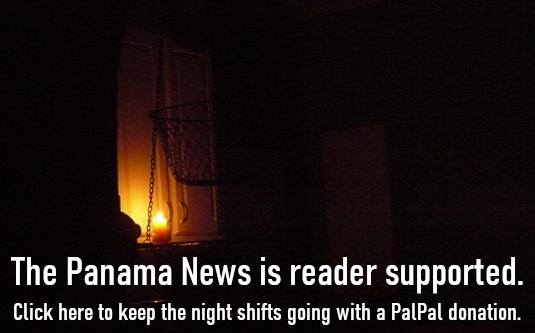Archive photo of an ExxonMobil refinery near Chicago in 2014. They lied about climate change and don’t let them greenwash you into thinking otherwise. Photo by Richard Hurd.
COP26: Half-baked carbon market rules fail to take heat off the climate
by Carbon Market Watch
After over five years of dithering and two weeks of intensive negotiations, the world’s governments settled on slimmed-down ground rules for carbon markets under the Paris Agreement’s Article 6. This deal will provide escape hatches for government and corporations seeking to renege on their climate responsibilities, in particular undermining the urgent emissions cuts needed in the short term.
Following years of delay, carbon markets and the rules governing them under Article 6 of the Paris Agreement were a hot topic and contentious issue at the UN’s 26th climate change conference in Glasgow (COP26). Following heated negotiations and horse trading, a compromise deal was sealed at the 13th hour, after the official end of the conference was originally scheduled to take place.
The patchy deal contains omissions through which planet-heating emissions can still continue to seep, while giving the impression or illusion of progress on paper. “At COP26, governments were meant to ensure that carbon markets help take the heat off the climate,” said Carbon Market Watch’s Executive Director Sabine Frank. “They came up with a compromise that risks turning up the temperature dial instead of keeping it below 1.5°C.”
Fossil fuel corporations and interests appear to have played a major role in straitjacketing ambition at this dangerous juncture for the global climate. “International carbon markets only make sense if they support the climate solutions of the future, rather than giving the polluters of the present and past an easy way out,” warns CMW’s Policy Director Sam Van den plas.
Return of zombie credits
The 1997 Kyoto Protocol established a system (the Clean Development Mechanism) that put into circulation hundreds of millions of carbon credits through thousands of projects. These zombie credits are of poor quality, lack environmental integrity and most of the projects they financed would have happened anyway without the financial support.
Rather than being completely scrapped, the agreement will likely allow around 300 million of these zombie credits to be transferred to the Paris Agreement. This is a travesty that will dilute and scupper current climate ambitions. “Sadly, the zombie credits have been given renewed life and could continue to be used for the next decade, cleansing climate targets on paper but spoiling the atmosphere in reality,” said CMW Policy Officer Gilles Dufrasne.
Double trouble averted
Negotiations at COP26 set out to avoid the risk that under the new carbon markets, a single tonne of CO2 reduced will be counted towards multiple climate commitments. This would water down efforts to stop the climate crisis.
It is imperative to ensure that emission reductions are correctly tracked and reported. In Glasgow, countries agreed to correct their final emission levels for carbon credit units that they authorise, but scrutiny will be required to ensure that companies do not exploit the very technical and unclear language included in the text.
“Double-counting of emission reductions defies logic and would be a futile attempt to cheat the atmosphere,” said CMW Policy Officer Gilles Dufrasne. “The agreement reached in Glasgow sends a signal that this cannot be tolerated, and voluntary carbon market actors have been put on notice: companies cannot use emission reductions which happen under existing climate targets as carbon offsets anymore.”
Markets inch beyond offsetting
Carbon offsetting is (at best) a zero-sum game and does not lead to global emission cuts since greenhouse gas reductions in one place are cancelled out by continued pollution elsewhere. The first step towards phasing out zero-sum offsetting is to automatically cancel a portion of every batch of credits issued.
The deal requires a mandatory 2% cancellation of each credit traded under the new centralised carbon market (article 6.4), confirming that tonne-for-tonne offsetting must end. However, this remains too low to contribute meaningfully to reducing emissions overall. Moreover, bilateral trades of emission reductions and removals brokered under Article 6.2 still unacceptably remain exempt from a mandatory partial cancellation.
“By and large, international carbon markets will be used to shift pollution from one place to another,” said CMW Policy Officer Jonathan Crook. “That governments would still want to rely on this faulty logic shows that our leaders have not grasped the urgency to act.”
Gaps in human rights
Carbon market projects affect real people in the real world. That is why one of our core demands for COP26 was the integration of language to respect, protect and promote human rights, as well as the rights of local and indigenous peoples into Article 6. Even though wording on human rights has now made it into the text, it overlooks indigenous peoples’ right to free, prior and informed consent, and fails to give human rights the importance they deserve.
On a more positive note, any possible grievances flagged by peoples and communities negatively impacted by carbon crediting projects will be overseen and addressed by an independent body. For a long time, it worryingly and unacceptably seemed as if oversight for grievances would be left to the same body setting the ground rules for markets, but reason prevailed in the end to establish an independent mechanism.
“The small steps taken in the direction of better recognition of human rights and the rights of indigenous peoples are insufficient,” observes CMW Policy Officer Jonathan Crook. “Grievances will importantly be overseen by an independent body, but there is glaringly no guarantee to secure free, prior and informed consent from indigenous peoples.”
Contact us by email at fund4thepanamanews@gmail.com
To fend off hackers, organized trolls and other online vandalism, our website comments feature is switched off. Instead, come to our Facebook page to join in the discussion.
These links are interactive — click on the boxes













